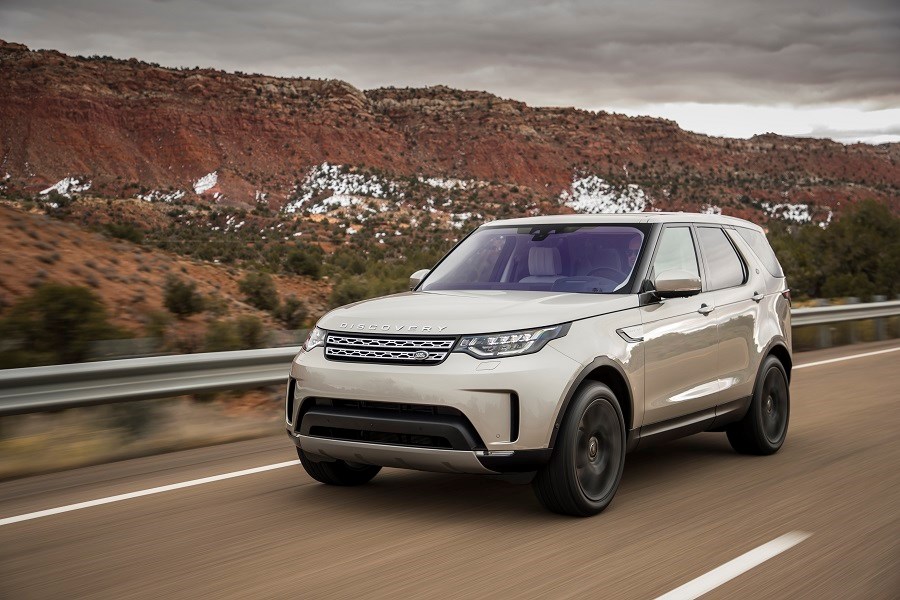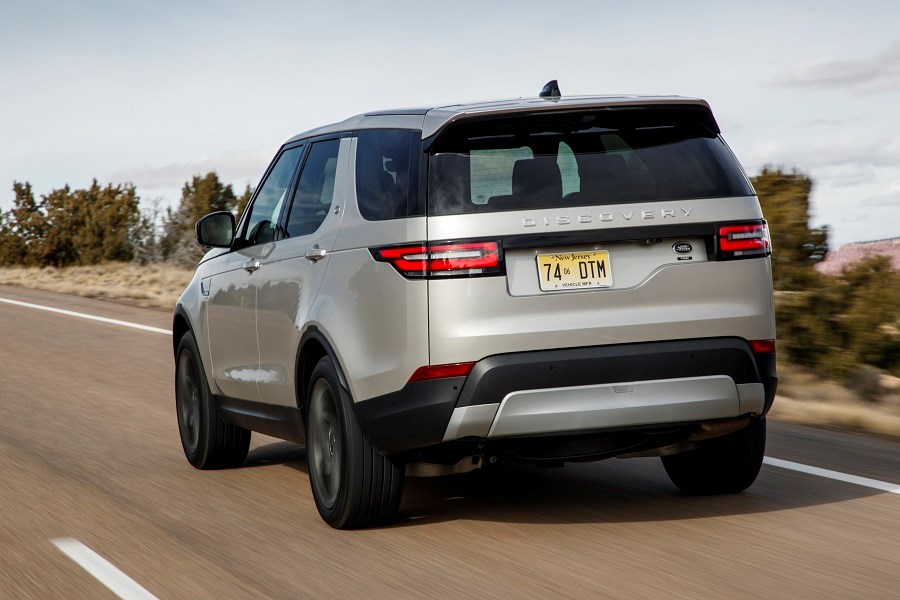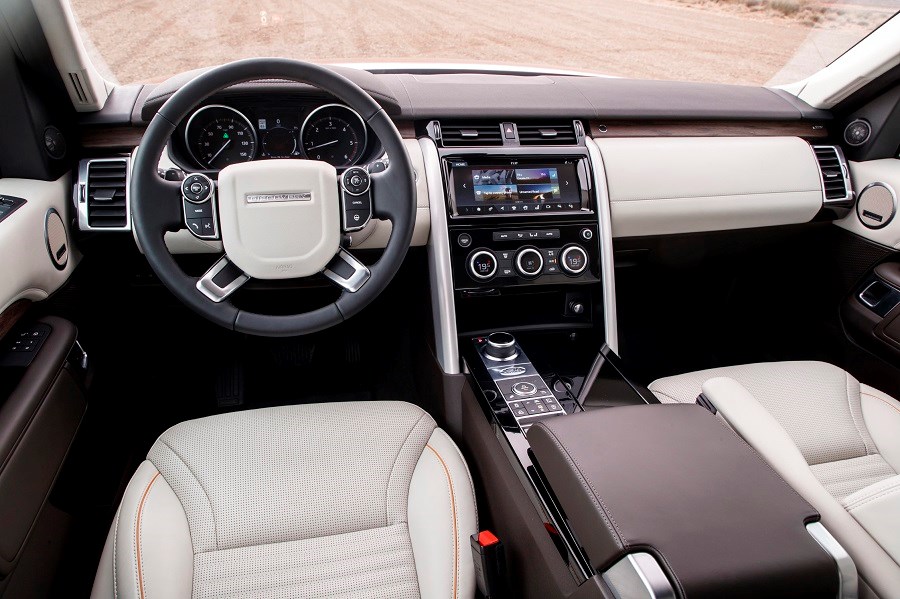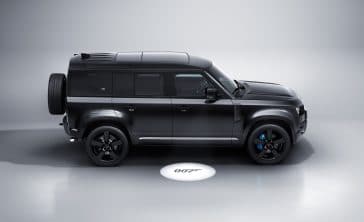Model Review
The Land Rover Discovery has quite a history behind it, and has recently celebrated its 30th anniversary.
The first versions hit the road in 1989, when Land Rover decided it needed a practical off-roader more orientated towards families to sit between the rugged Defender and plush Range Rover.
The first Discovery shared many of its components with the Range Rover, and it soon became a popular and durable choice. There are still plenty of them left on the roads, too, which is a testament to the Discovery’s reliability.
Land Rover also showed its worth on rough terrain with a series of worldwide challenges showcasing the Discovery’s off-road abilities.
A heavily revised second-generation model went on sale in 1998, although the biggest change came in 2004 with the Discovery 3. It was a model designed first and foremost for American customers and didn’t immediately appeal to Discovery fans. However, once it was realised that the Discovery was just as capable off-road and more luxurious than ever, it soon became very popular.
A revised Discovery 4 would follow the same pattern with a fresh look, as well as a revised diesel engine.
Latest model
The Discovery has never been a petite car, but the latest model is truly gargantuan in size, and towers above nearly everything else on the road today.
It was another big change in design for the model, and it adopted a similar look to the smaller Discovery Sport. Perhaps the biggest alteration was the cabin, which was centred around a new ‘InControl’ 10-inch touchscreen system that rid the cabin of any unnecessary buttons.
In typical Land Rover fashion, off-road capability was improved, with the latest model having a higher ground clearance and a wading depth of 90cm — a 20cm gain relative to the previous car. A range of off-road settings ensures that the Discovery can go further off the beaten track than ever before.
Since launch in 2017, the Discovery has won a number of awards including Auto Express Magazine’s Car of the Year, while a Commercial model has been added to the range to appeal to business users.
A 30th Anniversary Edition was also launched in January 2019 to mark three decades of the Discovery. Just 400 of these are available in the UK, with each coming in metallic paint finishes. Other extras include 22-inch alloy wheels, a Meridian sound system and a fixed glass roof.
Value for money
Given the sheer size of the Discovery, it’s no surprise that it’s no longer a cheap model. Prices start just under those of the Volvo XC90 and Audi Q7, although the entry-level ‘S’ version is not very well equipped. Cloth seats, halogen headlights and no climate control or satellite navigation are not what you expect when splashing out nearly £50,000 on an SUV. It’s the next step up — SE — that’s the spec of choice, starting from £54,085. Top spec versions are expensive, though, with prices stretching to almost nearly £70,000.
If you want an exceptionally cheap off-roader, you can pick up an old Discovery for around £1,000, although expect to have to fork out for inevitable reliability woes. Meanwhile, around £7,000 will pay for a sturdy Discovery 3.
The latest model is still quite new, with the cheapest ones hovering around the £36,000 mark at the time of writing. There are some great offers available on nearly-new models, however. We spotted an example in mid-spec SE trim, which had covered 4,000 miles and was less than a year old, for £40,000. That’s nearly £15,000 off the price off a new one, which is a fantastic discount.
Looks and image
There’s one thing that’s certain about the Discovery; you won’t go unnoticed in it.
There are very few cars on sale today that can match the sheer size of the latest model. From from the front it’s stylish and bold-looking, with a sharp resemblance to the Range Rover.
However, the rear of the current Discovery has caused controversy. The off-centre rear number plate has been a common feature of the model for some time, but a new format was adopted on the latest car. The outcry regarding this decision has been so intense that aftermarket firms are now fitting new boot lids with a central number plate for thousands of pounds. We personally think it’s inoffensive, but looks are always subjective.
The inside is less controversial, with a stylish and modern layout throughout, headed up by the easy-to-use 10-inch touchscreen. The quality inside is excellent, with first-rate materials used throughout. It feels built to last — whether that be for those using their Discovery’s as working vehicles or as family cars. Our only gripe with the cabin is how sparse it feels on entry-level versions. This is because Land Rover haven’t included climate control and are offering plain cloth seats, which feels a little stingy to us.
The latest Discovery is far more agile than its predecessor, but you have to remember just how top heavy this SUV is. This means there’s plenty of roll in the corners and it’s not a car that can be pushed as a result.
The Discovery really excels when it comes to comfort and refinement. The cabin is very hushed even at motorway speeds, while the air suspension does a fantastic job of ironing out bumps in the road to leave a relaxed and smooth drive. The three engines also suit the Discovery’s character well, with each delivering plenty of power to ensure that it never feels lethargic, despite it weighing over two tonnes.
Space and practicality
The Discovery is nearly unmatched when it comes to the sheer space on offer.
Few seven-seaters this side of van-based MPVs can offer the interior space of the Discovery, as it has enough seating for seven adults in comfort. A clever stacked roof design inherited from past models ensures that the roof height increases towards the rear of the car, allowing for extra headroom in the second and third rows. There are also Isofix points for five child seats on all but the entry-level S version, which makes the Discovery fantastically practical for family duties.
Land Rover also prides itself on the impressive amount of storage space in the Discovery’s cabin, with well-sized cubbyholes dotted throughout the cabin.
With seven seats up, the boot is quite small, but its 228-litre capacity is enough for a couple of small suitcases. However, with five seats in place the Discovery offers a massive 1,137 litres, which eclipses other SUVs in this category. And given that with all rear seats folded this number increases to a whopping 2,406 litres, it’s little surprise that Land Rover offers the model in two-seat ‘Commercial’ guise.
The Discovery was also awarded a five-star safety rating by Euro NCAP, with standard safety aids including low-speed autonomous emergency braking and lane-keep assist. With that said, it’s disappointing that you have to go further up the trim levels before you get adaptive cruise control, high-speed autonomous emergency braking, rear-cross traffic alert and a 360-degree parking monitor.
Engines
Three engines are offered in the Discovery. The first of these is a 237bhp ‘Ingenium’ 2.0-litre diesel, which is capable of accelerating from 0-60mph in 8.3 seconds and a top speed of 121mph. This is the pick of the line-up thanks to its excellent efficiency. The other diesel option is a 302bhp 3.0-litre unit, which is a second quicker to sprint to 60mph and has a top speed of 125mph.
The only petrol option available is a powerful 296bhp 2.0-litre unit, which is capable of accelerating to 60mph in seven seconds and has a top speed of 132mph.
All engines are paired to an eight-speed automatic transmission — and because it’s Land Rover — an extremely capable four-wheel-drive system.
Running costs
Given the vast size of the Discovery, it’s not a model you can expect low running costs with. The Discovery will also be more expensive to run than rivals such as the Audi Q7 and BMW X5.
However, the diesel options are the best choice in terms of efficiency, with the 2.0-litre diesel engine achieving a claimed fuel economy figure of 33.6mpg, and low CO2 emissions of 197g/km. The larger diesel engine returns similar figures, even with its extra power.
The petrol engine is noticeably thirstier and could prove expensive to run for drivers covering a lot of miles each year. Its claimed 25.8mpg and CO2 emissions of 222g/km are a bit disappointing – even for a car of this size.
Road tax could also be costly, with the Discovery (irrespective of engine) costing £450 per year to tax between years two and six after its first registration. However, its insurance premiums stack up well next to rivals, as it slots into groups 33 or 44, depending on engine and trim.
Things to look out for
For a premium brand, Land Rover has had quite a poor reputation for reliability. While the British firm’s cars have undoubtedly improved in this respect in recent years, the Discovery has still been affected by an engine problem on 2016 and 2017 model year vehicles, where the oil quickly becomes contaminated. This ultimately means that the cars carrying this problem require servicing far more often than what Land Rover claims. That said, the issue has only affected a small number of cars.
Rivals
The Discovery is one of very few SUVs that can genuinely seat seven adults in comfort, with the Volvo XC90 and Mercedes GLS also holding this crown. Other options for those not so concerned about having those extra two seats include the Audi Q7, BMW X5, Mercedes GLE, Lexus RX L, Porsche Cayenne and Volkswagen Touareg. Those wanting sheer off-roading ability — without concern for luxury and on-road dynamics — should have a look at the Toyota Land Cruiser and Mitsubishi Shogun.
Depreciation
The Discovery is a fantastic used bargain. Despite Land Rovers traditionally holding their value well, the Discovery does not follow that pattern to the same extent. With up to £15,000 available off list price on examples under a year old, it pays to shop around to find the best deals.





